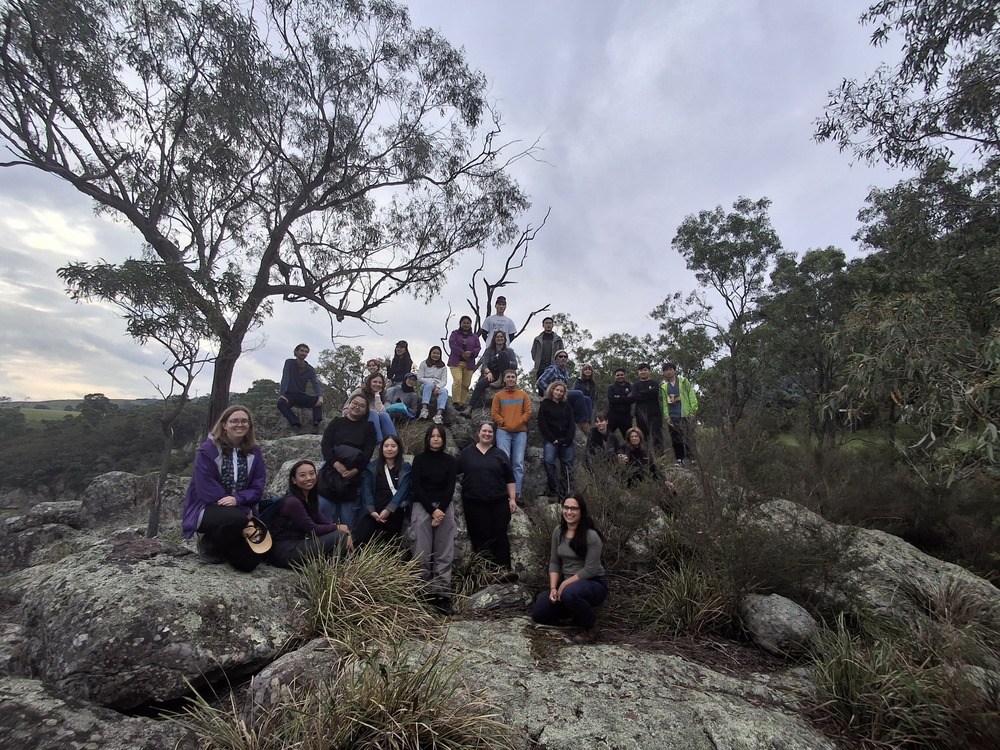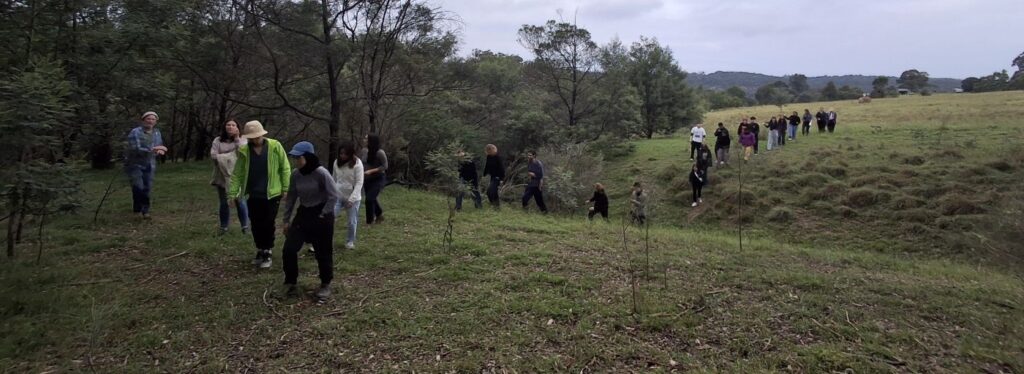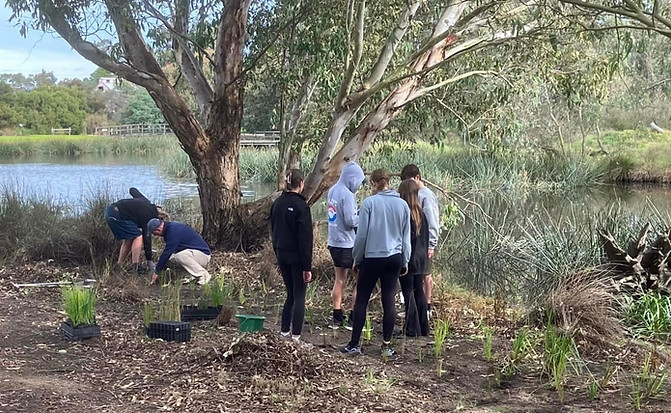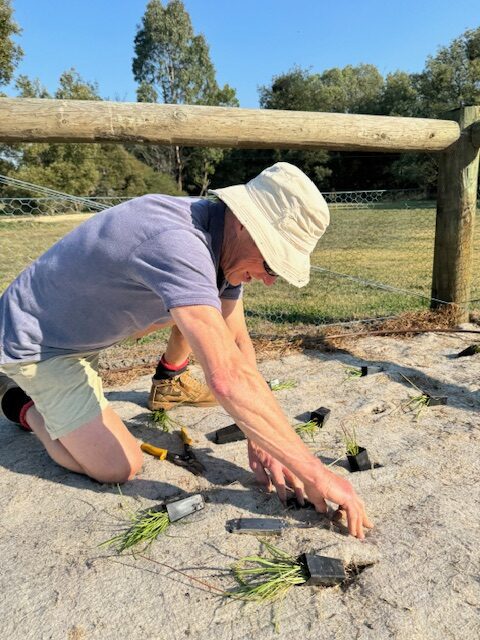
Sustainable Landscapes students visit EcoGipps

In April 2025, a group of Sustainable Landscapes students from the University of Melbourne were welcomed to EcoGipps.
This visit was part of the master’s student’s weekend adventure to Gippsland – a two-day tour to understand different land management practices across the Gippsland region.
Led by Dr Andrea Rawluk from the University’s School of Agriculture, Food and Ecosystem Sciences with the support of Biodiversity Legacy Projects Officer, Jyoti Kala, students visited multiple properties and were immersed in conversations about regenerative agricultural practices, the Commons and community environmental campaigns. Over the weekend, the students also spoke closely with landowners who are working hard to find solutions for a complex variety of land management challenges.
The weekend tour included visits to:
- Tarwin River Forest, a covenanted rainforest in South Gippsland, where forest stewards Stuart and Victoria took the students on a walk to a rainforest gully, where they saw critically endangered Slender Tree-ferns. They shared stories about their rainforest work, looking after the covenanted property and protecting Gippsland’s forests via Gippsland Forest Guardians.


The students also visited:
- EcoGipps, where they learned about the broad vision, the four properties that make up the EcoGipps venture regeneration activities, tree planting and weed management.
- Munjara Outdoor Centre – serene bushland at Lake Glenmaggie.
- NeavesMirams Agriculture, Regenerative Dairy Farm, Newry – where leaders Kate and Pete shared their journey to regenerative agriculture practices. The students learned about farm impacts on pasture production, milk production and productivity. They also enjoyed a walk to look at multispecies pastures, trees and birds.
- Woodcote Farm, Holistic Agriculture, Perry Bridge, where leaders Ruth and David shared their wisdom about agricultural practices in balance with nature – recognising natural systems, grasses, underground livestock and above-ground livestock. They highlighted their philosophy of ‘do no harm’ – how caring for the cattle, combined with mosaic-style grazing, supports both wildlife and soil health.
We would like to acknowledge Dr Rawluk for organising the trip and for all her excellent work teaching and inspiring the students.





